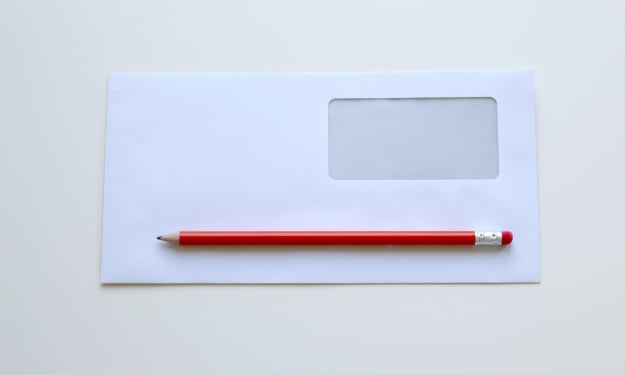
You find yourself in possession of a sleeveless shirt that fits you—in theory, at least. It is the same size and brand as a sleeved shirt that you love. It sits just right at your neck and waist, and it doesn't feel too tight or too loose at your bust. And yet, when you put it on, the armholes are all wrong.
You may discover a pair of useless little pockets just below your shoulders, or you may find that the bottom of the armhole sits about an inch lower than you really want it to. In either case, your bra is showing. And not in a fun, modern, "this is why I wore a lace bralette" way, but in a frumpy, awkward, "I don't actually know how to dress myself" way.
It's not you. It's the shirt.
Although the stereotypical fashion model is hourglass-shaped, the actual average fashion model has a basically rectangular body, with a minimum of curves. Fashion designers draft clothing patterns to fit this body type: flat pieces that will lay flat against a flat chest. When they size up these patterns to make clothes for people who are larger than most models (so, almost everybody), they typically do not account for non-rectangular body types. A small shirt is designed to fit a small rectangle. An extra large shirt is designed to fit an extra large rectangle. Nothing is adjusted to fit an apple-, hourglass-, or pear-shaped body.
If you sew your own clothes, you can fix this problem before you start cutting fabric, by re-drawing the armscye of the pattern to fit your own shape. Of course, not everyone has time to sew. Fortunately, there is a simple fix that almost anyone can do to vastly improve the fit of an existing garment.
You will need:- A sleeveless shirt with gaping armholes (I recommend practicing on a shirt that you would normally wear to bed or to the gym)
- Basic sewing supplies (pins, fabric scissors, sewing needle, thread that matches the color of the shirt, an iron)
- A mirror
- Patience
Step One: Stand in front of your mirror and put your shirt on inside-out.
Step Two: On one side, pinch the fabric at the armhole so that the armhole gap disappears. This pinch of fabric is called a dart. Experiment by pinching different areas and amounts of the armhole fabric. When you find something that looks and feels right to you, pin it in place.
Step Three: After you put that first pin in, move your arms around to make sure that the adjustment stays comfortable. Maybe do a little dance. If the armhole is too loose or too tight, do Step Two again.
Step Four: When you are happy with the size and position of your dart, pin-baste it—that is, put pins through the fabric in a straight line exactly where you are going to sew. Your dart should be triangle-shaped, with straight sides and the widest part at the armhole edge. The dart should point toward the fullest part of your bust (called "the point of the bust"). However, the tip of the triangle should sit a little distance away from the point of the bust.
Step Five: Do Step Three again. You may have to adjust your pins several times, but it is worth the effort to get the right fit. Only move on to Step Six when you are sure you are ready.
Step Six: Take the shirt off, keeping it inside-out, and pin the other side to match the first side as exactly as possible.
Step Seven: Baste the darts. That is, use a single thickness of thread and long, running stitches to sew where the pins are. Now remove the pins.
Step Eight: Try the shirt on again, this time right-side-out. Wave your arms around and wiggle. Is the shirt comfortable? Is it riding up? If it isn't perfect, pull the basting thread out and start over from Step One. I know this seems like a lot, but it's important to get the fit just right before permanently sewing the darts.
Step Nine: Turn the shirt inside out again. Sew the darts, using small, even stitches and keeping the seams as straight as possible.
Step Ten: Iron the darts so that the extra fabric goes toward the bottom of the shirt.
And that's it! By adding darts to each side, you have changed the front of the shirt from a flat shape that fits over a rectangular body to a curved shape that fits over a curved body. You win!
About the Creator
N. Sutton
I'm a jack of all trades, master of some, often treading water, sometimes treading asphalt. I wear my hair long and play the ukulele.






Comments
There are no comments for this story
Be the first to respond and start the conversation.